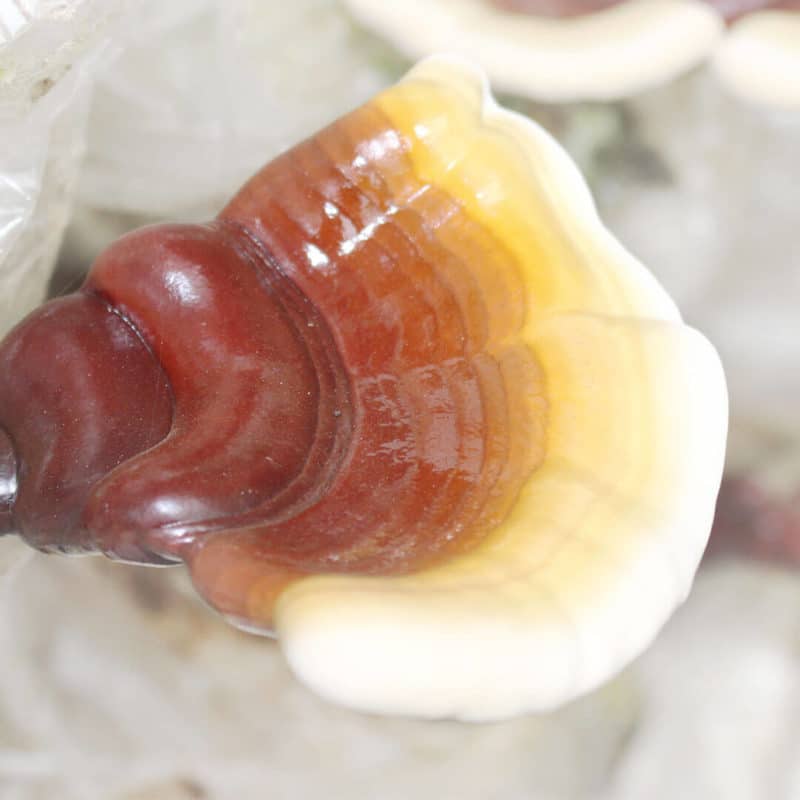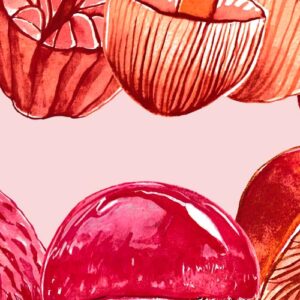Table of Contents
Forget about grass allergy and its bothersome symptoms
Did you know that grass allergy is one of the most frequent allergies worldwide? The pollen of this type of plant, which includes cereals such as wheat, oats, barley and common grass, can cause allergic rhinitis and asthma.
Symptoms include burning of the roof of the mouth, respiratory problems, tearing, dry cough, sneezing, nasal congestion, red eyes?
And this is a reality for more than 10 million people in UK from April to June. Here are some tips to help you cope better during these months.

What is it to be allergic to grasses?
In our territory, these poaceous species, among which are almost all the plants that we identify with spikes and whose stems have a reed, pollinate from April to June, so if your palate and nose itch and you feel sick, most probably have a grass allergy, in other words, you suffer from grass pollinosis.
Fortunately, today there are many treatment and prevention options, besides the hygienic measures essential to forget about its annoying symptoms.
As expert biologists in medicinal mushrooms, in this post we will talk about Sun Mushroom and Reishi, two resources of traditional oriental medicine that have shown great effects on allergy in current scientific studies. We will talk about them in the following lines.
What is a grass? The allergen par excellence
We are talking about a herbaceous plant representing 20% of our planet’s vegetation, characterized by a hollow stem and long, narrow leaves.
Within this group are the common grass (widely used as an alternative to lawns) and the most representative food crops in terms of surface area: wheat, corn, barley, canary grass, rice, oats, etc. But there are others whose names will be less familiar to you, such as ryegrass, fescue, spikelet, reed or cocksfoot.
If we analyze the presence of the allergen in our latitudes, about 2,493,388 million hectares in the UK (2019 data) are grassland, and within the arable land, almost 12.6 million hectares correspond to farmlands. In total, about 15 million hectares are susceptible to emitting allergens (to dimension this data, we give you another one: the UK has 3.2 million hectares of forest area).
This immense quantity of Poaceae (the name of grasses also known) and their biological behaviour – they pollinate from April to June – make the spring months especially hard.

Some grasses or poaceae that you should know:
1. Poaceae used for gardens and pasture:
– Cynodon dactylon or common couch grass
– Lolium perenne or ryegrass
– Poa annua or spikelet and poa
2. Grasses used as fodder:
– Dactylis glomerata or cocksfoot. Graminea used as fodder for animals.
– Festuca: Graminea cultivated essentially for fodder and grass.
– Phleum pratense or timothy grass. It is used as livestock feed, more specifically as hay for horses.
Also noteworthy is the Phragmites australis or reed, a herbaceous plant commonly used as a roof construction material.

How do I know if I have a grass allergy?
As we can read on the website of the UK Society of Allergies, the symptoms of grass pollinosis can cause from rhinitis to asthma, through sneezing, itchy nose, palate, eyes, nasal congestion, malaise, sneezing, etc..
These common symptoms of spring allergy differ from colds and cases of flu because their trigger is contact with the allergen, and they are closely linked to the pollination calendar.
In the case of grass pollen, it is easily transported and given its volume in our territory, the symptoms associated with allergy to its pollen are described from north to south. Please refer to the pollen forecasts to see how your area is affected.
Can grass allergy be cured?
According to Allergy UK, allergic rhinitis (hay fever) is the most common form of non-infectious rhinitis, affecting between 10-15% of children and 26% of adults in the UK. However, in recent research, around 49% of people reported suffering from Hay fever symptoms… What can be done to curb its symptoms?
Conventional treatments include allergy shots (immunotherapy), but in general preventive measures can be taken to limit contact with allergens, among others


Sun Mushroom and Reishi: modulators of spring reactions
The natural strategy with medicinal mushroom extracts to help curb grass allergy symptoms involves regulating the immune system (limiting inflammation) and adding natural antihistamine substances:
- Studies with sun mushroom indicate that it balances the Th1 and Th2 response and limits the release of histamine by the body, one of the substances with pro-inflammatory activity par excellence in allergic reactions.
- Studies with Reishi indicate that it has anti-inflammatory activity, which complements the action of the sun mushroom in the development of an allergic response.
In the market there are different options when it comes to consuming Sun Mushroom and Reishi, although few contain pure extracts, which are the by-products of the medicinal mushroom that have scientific studies that support its use as a supplement.
In this sense, Mico-Sol and Mico-Rei from Hifas da Terra are 100% organic pure extracts, which have the endorsement of the AESAN and the European organic production seal (guarantees the absence of toxic substances such as heavy metals, pesticides and fertilizers).
Discover Mico-Sol
Mico-Sol is an extraction high in antioxidants from selected specimens of the Royal Sun Agaricus mushroom.
Cutting Grass Allergy: Is it possible?
These are the main recommendations to minimize grass pollinosis:
- Have an accurate medical diagnosis to correctly identify the allergen causing the allergic reaction. Normally the symptoms will be more bothersome during the pollination season, but if they are observed outside the date range mentioned above, it is recommended to consult with the allergology service of reference.
- Know the pollen levels of the allergy-causing agent. These websites are helpful, especially for areas where grass pollen allergy is prevalent:
- Avoid, as far as possible, being close to plants that cause allergies. During pollination when outdoors, masks, handkerchiefs and sunglasses can limit the amount of pollen ingested.
- At home, ventilation time can be limited to 5-10 minutes, preferably before dawn.
- Avoid contact with perfumes, tobacco, hairspray, and pesticides… These substances usually worsen the symptoms of allergies.
Where are the grasses?
These plants are found in all parts of the world, representing more than 20% of the vegetation of our planet. They grow on all continents, including the most extreme habitats such as deserts. The only hostile areas for their growth are the highest mountains.
Coastal areas are the least favorable for their growth, however, the wind can easily transport their pollens so these regions are not spared from high amounts of pollen in the air (more than 130 grains per cubic meter).
Pollination calendar: When does grass bloom?
Although it is generally said that the time with the highest presence of pollen in the air is from April to May, there are variations by region and by type of plant. They are all grasses: from the most cultivated cereals to the plants that grow in meadows, roads and cities. For this reason, the process of each species is different and there are more than 10,000 species of grasses.
By region, according to different experts, pollen can be noticeable in the north until August, but on the Mediterranean coast, it can extend until almost the beginning of November.
When does a grass allergy end?
Although we are talking about a seasonal allergy more closely linked to the pollination season of a family of plants, grass allergy can occur throughout the year, being incredibly annoying in the months of spring, summer and autumn, depending on the region where you live.
It is also necessary to consider the allergy to other types of pollens such as olive, birch, banana, cypress, etc., also very widespread among the population.
This portal of the UK Society of Allergology offers updated information on pollen levels in the air, a key indicator to take preventive measures against grass allergies, among others.
In summary: tips for allergy to poaceae
Around 7 million people suffer from allergies to Poaceae plants, which are recognizable by their spike-like shape and bloom between April and June. Identifying the allergen and avoiding it as much as possible will help you minimize the discomfort it causes in your body. But there is more. Follow the treatment recommendations, and if you want, you can supplement with medicinal mushroom extracts such as Mico-Sol and Mico-Rei. In Hifas da Terra, we have a free counselling service.
WE RECOMMEND

Linoleic Acid: Why This Essential Omega-6 Is Vital for Your Health
☑️ Linoleic acid is a polyunsaturated omega-6 fatty acid essential for human health, as the body cannot synthesise it and must obtain it through diet. This fatty acid plays several critical roles, including supporting skin integrity, contributing to the formation of cell membranes, and serving as a precursor to important bioactive compounds. Its anti-inflammatory properties and role in maintaining the skin barrier make it particularly beneficial for skin health. Understanding the importance of linoleic acid and ensuring adequate intake can significantly impact overall well-being.

Are all red mushrooms toxic?
Red mushrooms are often perceived as toxic, but sometimes other properties are also recognised. Let’s discover them together in this post.

